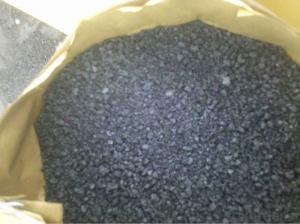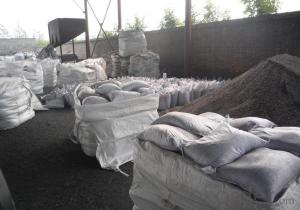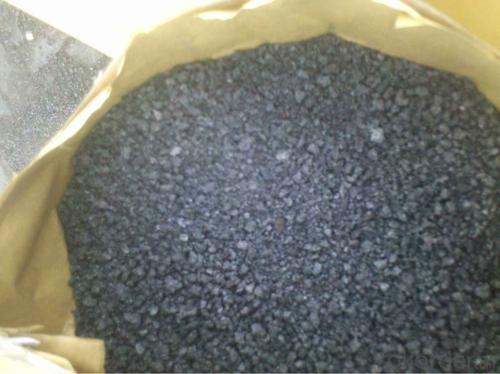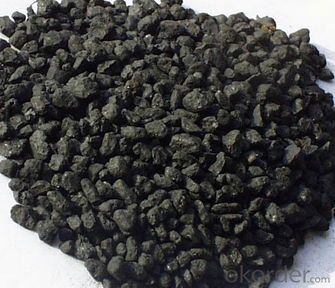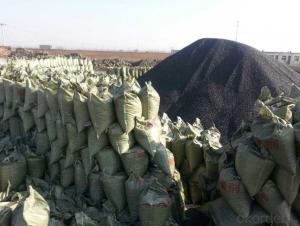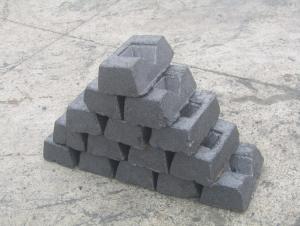Calcined Anthracite CNBM China With FC 95
- Loading Port:
- Tianjin
- Payment Terms:
- TT OR LC
- Min Order Qty:
- 0 m.t.
- Supply Capability:
- 100000 m.t./month
OKorder Service Pledge
OKorder Financial Service
You Might Also Like
Packaging & Delivery
| Packaging Detail: | 25kgs/50kgs/1ton per bag or as buyer's request |
| Delivery Detail: | Within 20 days after receiving corect L/C |
Our Products:
•Feature: All of our goods are made in the best quality of world famous Tianjin. All of our products are with High carbon, Low ash, low sulphur, Low Moisture.
•Application:
The Calcined Anthracite Coal/Gas Calcined Anthracite Coal/Carbon Raiser is mainly used in steelmaking in electrical stove, screening water, shipbuilding sandblast to remove rust. It can reduce the cost of steelmaking effectively by replacing the traditional petroleum coke of carburant.Also can improve the Carbon content in steel-melting and Ductile iron foundry.
General Specification of Calcined Anthracite:
Specifications
Calcined Anthracite
Fixed carbon: 90%-95%
S: 0.5% max
Size: 0-3. 3-5.3-15 or as request
PARAMETER UNIT GUARANTEE VALUE | |||||
F.C.% | 95MIN | 94MIN | 93MIN | 92MIN | 90MIN |
ASH % | 4MAX | 5MAX | 6MAX | 7MAX | 8MAX |
V.M.% | 1 MAX | 1MAX | 1.5MAX | 1.5MAX | 1.5MAX |
SULFUR % | 0.5MAX | 0.5MAX | 0.5MAX | 0.5MAX | 0.5MAX |
MOISTURE % | 0.5MAX | 0.5MAX | 0.5MAX | 0.5MAX | 0.5MAX |
Size can be adjusted based on buyer's request.
Pictures of Calcined Anthracite:

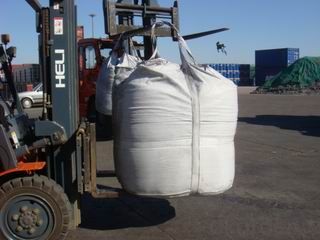
- Q: What are the effects of carbon emissions on the stability of volcanic regions?
- The stability of volcanic regions can be influenced by both direct and indirect effects of carbon emissions. At first glance, the direct impact of carbon emissions on volcanic areas seems relatively insignificant. Volcanic eruptions naturally release carbon dioxide (CO2), so the additional emissions from human activities may not have a significant individual effect on the stability of volcanic regions. However, the increased levels of carbon dioxide in the atmosphere can contribute to climate change, which can indirectly affect volcanic activity. Indirectly, the stability of volcanic regions can be affected by climate change resulting from carbon emissions. The rising global temperatures caused by climate change can lead to the melting of glaciers and ice caps. This, in turn, increases the amount of water on the Earth's surface. The additional weight of water in volcanic areas can potentially add pressure to magma chambers and trigger volcanic activity. Moreover, the increased water levels can result in higher levels of rainfall, which increases the risk of landslides and erosion in volcanic regions, potentially destabilizing the area. Additionally, climate change can alter precipitation patterns and create drought conditions, impacting the hydrological cycle. These changes can affect the availability of water for volcanic regions, ultimately influencing their stability. Volcanoes require water for the production of steam and pressure that can lead to eruptions. If there is a lack of water due to prolonged drought conditions, volcanic activity may decrease. However, unpredictable rainfall patterns can result in an excess of water, leading to an increased risk of flash floods and landslides that can destabilize volcanic areas. It is important to acknowledge that the effects of carbon emissions on the stability of volcanic regions are intricate and can vary based on factors such as local geology, volcanic activity, and climate conditions. Although carbon emissions may not directly cause volcanic eruptions, they can contribute to changes in climate patterns that can indirectly impact the stability of volcanic systems. Further research and monitoring are necessary to fully comprehend and quantify these effects.
- Q: How does carbon dioxide affect global warming?
- Carbon dioxide is one of the primary greenhouse gases responsible for global warming. When released into the atmosphere, carbon dioxide traps heat from the sun and prevents it from escaping back into space, thus leading to an increase in the Earth's overall temperature. This phenomenon is often referred to as the greenhouse effect, where the Earth's atmosphere acts like the glass walls of a greenhouse, trapping heat and warming the planet. Human activities, such as burning fossil fuels for energy, deforestation, and industrial processes, have significantly increased the concentration of carbon dioxide in the atmosphere. These activities have released vast amounts of carbon dioxide that would have otherwise remained stored underground for millions of years. As a result, the concentration of carbon dioxide in the atmosphere has reached levels unseen for hundreds of thousands of years. The increase in carbon dioxide levels enhances the greenhouse effect and intensifies global warming. Rising temperatures have various adverse effects on the Earth's climate system. They contribute to the melting of polar ice caps and glaciers, leading to rising sea levels. This process threatens coastal communities and low-lying areas with increased risk of flooding and coastal erosion. Additionally, global warming disrupts weather patterns, leading to more frequent and severe extreme weather events, such as hurricanes, droughts, and heatwaves. Furthermore, global warming affects ecosystems and biodiversity. Many species are unable to adapt to rapid changes in temperature, resulting in habitat loss and an increased risk of extinction. Coral reefs, for example, are highly sensitive to temperature changes and are experiencing widespread bleaching events due to increased ocean temperatures. To mitigate the effects of carbon dioxide on global warming, efforts are being made to reduce greenhouse gas emissions. Transitioning to renewable energy sources, improving energy efficiency, reforestation, and implementing sustainable practices are some of the measures being taken to curb carbon dioxide emissions and mitigate the impacts of global warming.
- Q: What do you stand for?Tar, smoke, nicotine, and carbon monoxide. What do you mean? What's the size of the smoke, or the size of the smoke? What's the connection? Smoking is harmful, so how do you choose to smoke smaller cigarettes?
- These three values referred to as physical and chemical indicators, my understanding is this: the Tar Nicotine tar is representative of nicotine. The carbon monoxide is simply to give the environmental protection department and health department occasional children get. Like the automobile exhaust mean.
- Q: What is the role of carbon in the formation of fossil fuels?
- The role of carbon in the formation of fossil fuels is crucial. Fossil fuels, such as coal, oil, and natural gas, are formed from the remains of ancient plants and organisms that lived millions of years ago. These organisms were primarily made up of carbon-based compounds. Over time, the organic matter accumulated and was buried under layers of sediment, subjected to intense heat and pressure. This process, known as carbonization, caused the carbon within the organic matter to undergo chemical changes, transforming it into fossil fuels. Therefore, carbon is the key element involved in the formation of fossil fuels.
- Q: Can barbecue carbon still have the effect of absorbing formaldehyde?
- Yes, there is also a role in the adsorption of formaldehyde in a variety of ways, the following provides 3 commonly used way:1) plants, yelan, Monstera can remove harmful substances in the air, tiger and Chlorophytum Chlorophytum can absorb more than 20% of indoor formaldehyde and other harmful gases; aloe is to absorb formaldehyde players, Milan, etc. wintersweet can effectively remove sulfur dioxide in the air, carbon monoxide and other harmful substances; orchid, osmanthus, Lamei etc. plant cilia to retain and adsorption particles floating in the air and soot.Ivy, cycads can effectively absorb indoor benzene, Chlorophytum can "devour" indoor formaldehyde and hydrogen peroxide, Arisaema also can absorb 40% of benzene, 50% tce. The volatile oils in flowers, such as roses, Osmanthus fragrans, violet, jasmine and carnation also have significant bactericidal effects.
- Q: What is the carbon emission of the air conditioner?
- Summer, less air-conditioning, 1 hours to reduce carbon emissions of 0.621kg, the action of the low carbon family is not how much money you need to pay, but to change some of your habits and habits, and contribute to environmental protection. Hand in hand to join hands to tackle climate warming, perhaps our hearts will be less worried about the future......
- Q: Can carbon be recycled?
- Indeed, carbon has the potential to undergo recycling. Carbon recycling pertains to the process of capturing and reutilizing carbon dioxide (CO2) emissions rather than releasing them into the atmosphere. There exist various approaches to carbon recycling, which include: 1. Carbon capture and storage (CCS): This procedure entails the capture of CO2 emissions from power plants or industrial facilities, followed by their storage underground or in deep ocean formations. CCS aids in preventing the release of CO2 into the atmosphere, thereby reducing its impact on climate change. 2. Carbon capture and utilization (CCU): CCU involves capturing CO2 emissions and transforming them into valuable products. For instance, CO2 can be converted into fuels, chemicals, or construction materials through a range of chemical and biological processes. 3. Enhanced oil recovery (EOR): This technique encompasses the injection of captured CO2 into oil reservoirs to enhance the quantity of recoverable oil. In addition to recycling carbon, it also boosts oil production. 4. Biological carbon sequestration: This method employs plants, trees, and other biological organisms to absorb CO2 from the atmosphere through photosynthesis. By promoting reforestation, afforestation, and sustainable land management practices, we can augment carbon sequestration and offset emissions. While carbon recycling technologies are still under development and refinement, they present promising solutions for mitigating greenhouse gas emissions and addressing climate change. By recycling carbon, we can diminish our dependence on fossil fuels, minimize the release of CO2 into the atmosphere, and strive towards a more sustainable and low-carbon future.
- Q: What materials can be carbonitriding?
- Low temperature carbonitriding for high alloy tool steel, high-speed steel tools, etc., in temperature carbonitriding is under great pressure not only in carbon steel wear parts, high temperature carbonitriding is mainly used for medium carbon steel and alloy steel under great pressure.
- Q: What are the implications of melting permafrost on carbon emissions?
- The implications of melting permafrost on carbon emissions are significant and concerning. Permafrost refers to the permanently frozen ground found in cold regions, consisting of soil, rocks, and organic matter. It acts as a large carbon sink, storing vast amounts of organic material, such as dead plants and animals, which have been frozen for thousands of years. However, with rising global temperatures, permafrost is thawing at an alarming rate, leading to potential release of this stored carbon into the atmosphere. When permafrost thaws, the organic matter within it decomposes, releasing greenhouse gases, particularly carbon dioxide (CO2) and methane (CH4), into the atmosphere. Methane is an especially potent greenhouse gas, with a global warming potential over 25 times greater than that of CO2 over a 100-year period. The release of these gases further contributes to climate change, exacerbating the already accelerating warming trend. The implications of melting permafrost on carbon emissions are twofold. Firstly, the release of large amounts of CO2 and methane from thawing permafrost can significantly amplify the greenhouse effect, leading to more rapid and intense climate change. This can result in a feedback loop, where increased warming causes more permafrost thawing, releasing more carbon, and further accelerating global warming. Secondly, the release of carbon from permafrost also affects global carbon budgets and climate change mitigation efforts. The stored carbon in permafrost is estimated to be twice as much as is currently present in the Earth's atmosphere. As this carbon is released, it adds to the overall carbon emissions, making it more challenging to achieve emission reduction targets outlined in international agreements, such as the Paris Agreement. It also means that efforts to limit global warming to well below 2 degrees Celsius above pre-industrial levels become even more crucial. Furthermore, the release of carbon from permafrost also impacts local ecosystems and communities. Thawing permafrost can lead to the destabilization of infrastructure, including buildings, roads, and pipelines, as well as the disruption of traditional livelihoods, such as hunting and reindeer herding. It can also cause land subsidence and increased coastal erosion, threatening coastal communities and biodiversity. In conclusion, the implications of melting permafrost on carbon emissions are far-reaching. It not only exacerbates climate change by releasing potent greenhouse gases into the atmosphere but also hampers global efforts to mitigate carbon emissions. Sustainable actions to reduce greenhouse gas emissions and protect permafrost ecosystems are crucial to minimize these implications and safeguard our planet's future.
- Q: What is the concept of carbon neutrality?
- Carbon neutrality is the idea that an entity, whether it be an individual, organization, or even a whole country, has achieved a balance between the amount of carbon dioxide emissions they produce and the amount they offset or remove from the atmosphere. It is essentially a state where the net carbon emissions are zero, indicating that the entity is not contributing to the increase in greenhouse gases and climate change. Achieving carbon neutrality often involves reducing emissions through sustainable practices and technologies, as well as investing in carbon offset projects or utilizing carbon capture and storage methods.
Send your message to us
Calcined Anthracite CNBM China With FC 95
- Loading Port:
- Tianjin
- Payment Terms:
- TT OR LC
- Min Order Qty:
- 0 m.t.
- Supply Capability:
- 100000 m.t./month
OKorder Service Pledge
OKorder Financial Service
Similar products
Hot products
Hot Searches
